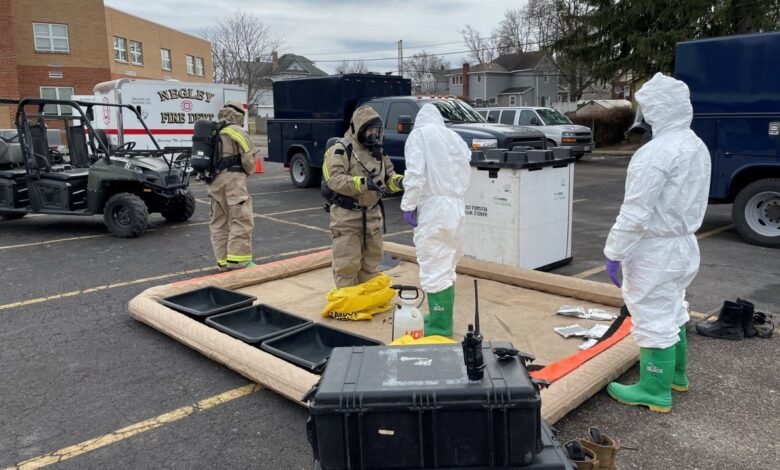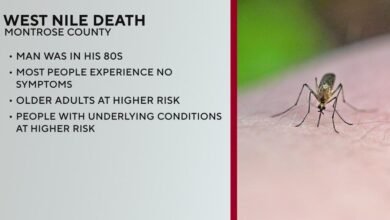Groundbreaking $10M Health Study Set to Unearth Shocking Secrets in East Palestine – All Funded by the Feds!

Federal Funding for a Comprehensive Health Study Following the East Palestine Derailment
In a significant move to address public health concerns, the National Institutes of Health (NIH) is funding a comprehensive five-year, $10 million health study in East Palestine, Ohio, where a catastrophic train derailment occurred in February 2023. This study aims to investigate the potential long-term health impact on residents who were exposed to toxic chemicals released during the incident.
The Incident and Its Immediate Aftermath
On February 3, 2023, a freight train carrying various chemicals derailed in East Palestine, resulting in a massive fire and the release of hazardous materials into the environment. Among the chemicals involved were vinyl chloride, a known carcinogen, and other toxins that raised immediate concerns about air and water quality in the area. The derailment not only prompted an emergency response but also ignited fears among residents about their health and safety.
In the days following the accident, authorities undertook extensive clean-up efforts and attempted to assure the community that the situation was under control. However, many residents reported experiencing symptoms such as headaches, respiratory issues, and skin irritations. Some even expressed concerns about potential long-term effects, prompting calls for a thorough investigation into the health consequences of such chemical exposure.
Launch of the Health Study
The recent announcement by the NIH marks a crucial step in addressing the lingering health worries of East Palestine residents. The study will encompass various health assessments and track the well-being of individuals exposed to the toxic substances resulting from the derailment. Affected community members will be engaged to gather comprehensive data on their experiences and health outcomes since the incident.
Dr. Michael Apkon, a key figure in the initiative, emphasized the vital need for understanding the health implications stemming from such environmental disasters. He stated, “This research will help elucidate the potential chronic health effects associated with chemical exposure and aid in developing targeted public health interventions.”
Objectives of the Study
The NIH-funded study aims to achieve several overarching goals:
- Identify Health Effects: One of the primary objectives is to identify any potential health effects that might arise from exposure to the chemicals released during the derailment. Researchers will closely examine both physical and psychological health indicators to gain a comprehensive understanding of community health.
- Long-Term Monitoring: The five-year timeframe allows researchers to conduct thorough follow-ups, enabling an in-depth look at how health outcomes may evolve over time. This longitudinal perspective is crucial for detecting delayed effects of chemical exposure.
- Community Engagement: Integral to the study’s success is the involvement of local community members. Researchers will collaborate with residents to ensure that the study reflects their experiences and addresses their specific health concerns.
- Public Health Recommendations: The findings from the study will not only contribute to the understanding of the specific incident but will also inform future public health responses to similar environmental crises.
Collaboration with Local Resources
The study will collaborate closely with local health departments and universities to enhance data collection and analysis efforts. This collaboration aims to foster a sense of trust and transparency within the community while leveraging local expertise and resources.
Dr. Apkon noted, “By working hand-in-hand with local organizations, we aim to build a robust framework for data collection that will yield insights into the health needs of affected residents.” This commitment to collaboration underscores a broader ethos of community-focused health research, ensuring that those directly impacted by the derailment have a voice in their health assessment.
Potential Challenges and Criticisms
While the funding for the health study has been met with optimism, challenges and criticisms remain. Some residents have expressed skepticism about the adequacy of a $10 million budget for a comprehensive five-year study. Concerns about potential bureaucratic hurdles and the speed of data collection have also surfaced. For many affected individuals, the anxiety about their health continues to linger, and they are looking for immediate answers.
Bridging the gap between scientific research and community concerns will be crucial in maintaining public trust throughout this study. Researchers must not only be committed to thorough investigation but also to transparent communication about progress and findings. Regular updates to the community can mitigate fears and reinforce the importance of the study findings.
Health Implications for Similar Incidents
The East Palestine derailment has far-reaching implications beyond just the local community. Environmental disasters involving hazardous materials are not unique, and understanding the health impacts in East Palestine could inform responses to future incidents across the country. The outcomes of this study may serve as a template for health assessments in other communities affected by similar environmental exposures.
Public health officials are keen to learn from this study, creating guidelines and response protocols for future chemical exposure incidents. Insights gained from East Palestine will be invaluable in shaping policies that prioritize community safety and health in the wake of such disasters.
Conclusion
The NIH-funded health study in East Palestine represents a concerted effort to safeguard community health in the aftermath of an environmental disaster. As researchers embark on this critical journey, the hope is to uncover valuable insights that will not only aid East Palestine residents but set a precedent for handling similar incidents nationwide. The commitment to engaging the community and conducting comprehensive assessments underscores the importance of public health in ensuring the well-being of those affected by such unfortunate events.
Summary
- The NIH has launched a $10 million health study over five years following the East Palestine train derailment.
- It aims to assess potential long-term health impacts on residents exposed to toxic chemicals.
- The study emphasizes community engagement and collaboration with local organizations.
- Key objectives include identifying health effects, conducting long-term monitoring, and providing future public health recommendations.
- Challenges include skepticism regarding funding adequacy and the potential for bureaucratic hurdles.
- The outcomes may inform responses to similar environmental disasters in the future.





